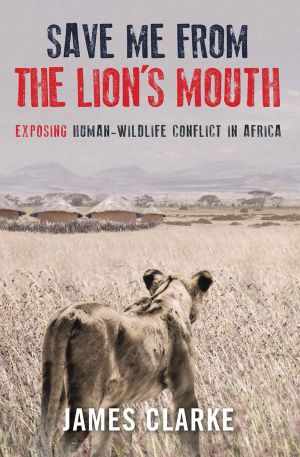Save Me from the Lion's Mouth

- Authors
- Clarke, James
- Publisher
- Penguin Random House South Africa
- Tags
- in many parts of africa a ‘front line’ has developed between humans and wild animals. people are daily and stressfully aware of their vulnerability , hippos , baboons , bushpigs , cane rates , dense sun-blocking swarms of locusts and quelea finches that can wipe out an entire season’s crop and leave a community starving. and a startling number of people in africa are killed by wildlife each year. , "in many parts of africa a ‘front line’ has developed between humans and wild animals. people are daily and stressfully aware of their vulnerability , whether from predators that eat their stock , this reality is rarely conveyed to investors in wildlife conservation or to visitors to wildlife sanctuaries. but the battle lines are drawn between communities directly impacted by the remnant wildlife of an increasingly congested africa , and the paymasters of a first-world population of voyeurs. can all the players co-exist? this controversial exposé of the conflict between humans and wildlife lifts the lid on the battle , and the paymasters of a first-world population of voyeurs. can all the players co-exist? this controversial exposé of the conflict between humans and wildlife lifts the lid on the battle for turf: the future of conservation will depend on the relationship established between wildlife authorities and those bearing the brunt along the front line. , or from marauders that trash their crops: elephant
- ISBN
- 9781920544751
- Date
- 2012-07-01T07:00:00+00:00
- Size
- 0.78 MB
- Lang
- en
In many parts of Africa a 'front line' has developed between humans and wild animals. People are stressfully aware of their vulnerability, whether from predators that eat their stock, or from marauders that trash their elephants, hippos, bushpigs, baboons, cane rats, dense sun-blocking swarms of locusts and quelea finches that can wipe out an entire season's crop and leave a community starving. And a startling number of people in Africa are killed by wildlife each year.
This reality is rarely conveyed to investors in wildlife conservation or to visitors to wildlife sanctuaries. But the battle lines are drawn between communities directly impacted by the remnant wildlife of an increasingly congested Africa, and the paymasters of a first-world population of voyeurs. Can all the players coexist?
This controversial exposé of the conflict between humans and wildlife lifts the lid on the battle for the future of conservation will depend on the relationship established between wildlife authorities and those bearing the brunt along the front line. The African noun for wildlife is nyama – meat. For millennia, bush meat was the birthright of rural communities. Now, over much of the continent – even where protein is scarce – it is illegal to hunt it. As a result, communities are developing foraging units of well-armed men.
They do not see poaching – even the merciless slaughter of rhinos – as being, in any way, reprehensible. Poachers are heroes. The urban public, even in Africa, are unaware that, annually, along the eastern side of Africa from Mozambique to the upper Nile, thousands of rural dwellers are eaten by lions, leopards, hyenas and crocodiles or are killed defending their crops from marauding elephants, hippos and buffaloes. Until more of the wealth from wildlife tourism and game hunting trickles down to the communities – at present it trickles up – resentment and bitter strife will grow.